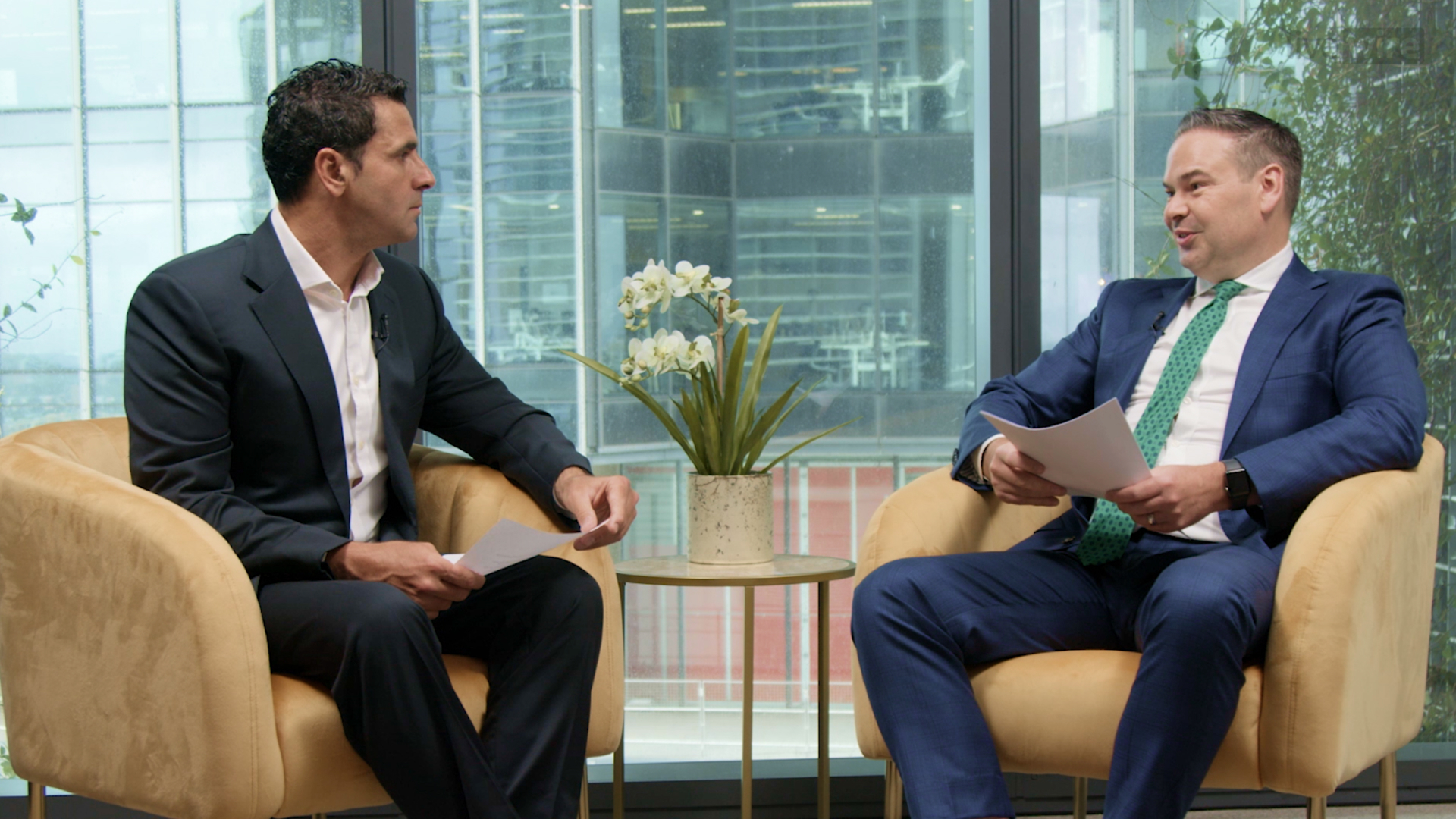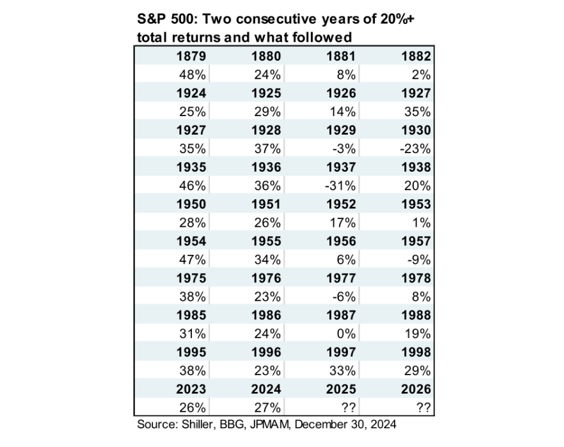Chief CommSec Economist shares 2025 Outlook
CommSec forecasts a year that both homeowners and investors will welcome - easing monetary policy and another bullish run for stocks.
As part of our 2025 Outlook Series wrap-up, CommSec Chief Economist Ryan Felsman said the country’s biggest lender remains optimistic, expecting four RBA rate cuts and a strong year for domestic and U.S. shares.
However, the path ahead will be bumpy. A fresh round of Trump-era trade wars threatens to derail progress on inflation just as parts of the market appear stretched and geopolitical risks persist.
“In this environment, volatility is inevitable. We’re likely to see corrections, particularly in sectors where valuations are already high,” Felsman says.
In our discussion, he shared insights on market opportunities, why he expects deeper rate cuts than his peers, the global outlook, and the federal election. Notably, he also explained why CommSec views Bitcoin exposure as a potential diversifier.
Watch the video, or read the wire below for the key takeaways from the interview.

Predicting 10%+ returns
Filmed shortly after Chinese AI firm DeepSeek made headlines, Felsman predicted that the U.S. stock market could build on its impressive gains - 24% last year and 23% in 2023 - the best back-to-back performance since 1998.
While past performance isn’t a guarantee of future results, CommSec forecasts the S&P 500 will reach around 6,600 points - a gain of about 10.6%, in line with the index’s historical average following a 20%+ rally.
The chart below highlights that another year of strong gains isn’t unprecedented, with similar patterns dating back to 1879.

“At the same time, if you look at projections, around 27 U.S. stockbrokers have set their S&P 500 targets at about 6,600. If that materialises, it would align with our expectations of a total return around 10%,” Felsman explained.
CommSec expects the same for the Australian sharemarket over the 2025 calendar year, forecasting a price return of 7%, with the rest coming from dividends.
However, this optimistic outlook hinges on the global economy maintaining its current path of falling inflation and resilient growth - factors that could be jeopardised depending on developments at the White House.
Key risks to watch
While the base case remains optimistic, CommSec highlights several key risks - most notably, the potential for global central banks to pause or slow their rate cut trajectory. The U.S. Federal Reserve has already signaled caution, opting to hold rates steady in its January meeting.
Inflation remains a lingering concern, compounded by the possibility of new tariffs. Beyond inflation, concerns are mounting over Trump’s proposed tax policies and their implications for America’s ballooning debt levels.
“A corporate tax cut from 21% to 15%, combined with personal tax cuts, would add to U.S. government spending. Is that sustainable? And will rising debt levels become a bigger problem?” Felsman questioned.
Elevated debt, persistent inflation, the potential for trade wars, and stretched equity valuations - particularly in the tech sector - could all trigger market corrections in the months ahead and investors would be wise to prepare.
The case for diversification
With Trump's tariff policies adding uncertainty and political instability in France and Germany, Felsman warns that market volatility and corrections are likely, especially in sectors with stretched valuations.
In this environment, diversification is key, and investors should hold a balanced portfolio across fixed income, equities, infrastructure, and even some exposure to Bitcoin.
"We've got a president in the White House now that's very pro-Bitcoin, and he's also very much focused on deregulation, tax cuts and the like. So the expectation is we should have a good year for the share market with that backdrop. But the US exceptionalism is going to be a standout and you're going to get different outcomes around the world," Felsman says.
DeepSeek: A catalyst for rotation into value stocks?
Felsman delved deeper into market dynamics, highlighting DeepSeek as a potential disruptor to the ongoing AI frenzy. He described it as a "spanner in the works" that is prompting investors to reassess whether they’re truly getting value from the dominant U.S. tech giants.
This uncertainty could spark a market rotation. “We saw a move into defensive sectors like consumer staples and healthcare when this situation emerged, and I think both could perform well this year,” Felsman says.
At the same time, a shift back into cyclical sectors may also be on the cards.
“Trump has made his stance clear— - drill, baby, drill.’ The energy sector was a laggard last year, with energy stocks on the ASX 200 down 15%. But with greater capital spending, particularly in energy, we could see a much stronger performance from energy stocks in 2025.”
More rate cuts than anticipated?
Following lower-than-expected core inflation data, markets have now priced in a 90% probability of this happening, with expectations of 2-3 rate cuts this year.
“Our expectation is for a February rate cut, followed by three more quarterly cuts, totaling 100 basis points this year. That would bring the cash rate down to around 3.35%,” Felsman says.
Will ASX investors rotate from banks to resources and consumer sectors?
Strong bank sector performance helped support the ASX in 2024, delivering a total return of nearly 12%, driven by high interest rates and capital inflows. However, with valuations now stretched at 18.6 times forward earnings, Felsman questions whether investors will shift into the undervalued materials sector, which lagged (-13%) and is now trading below its long-term average.
“This is the key trade - whether investors rotate into materials. With a 54% performance gap between banks and resources, the question is whether China’s stimulus will be enough to drive demand,” he said.
Consumer discretionary stocks also outperformed expectations, with retailers maintaining margins despite weak household spending. With tax cuts, low unemployment (4%), and potential rate cuts, Felsman sees scope for further gains.
“With borrowing costs coming down and tax cuts kicking in, will consumers open their wallets? That’s a sector to watch,” he noted.
He also sees potential in real estate. “We may see a bounce back in property prices, with single-digit gains expected nationally,” Felsman added.
Australian election uncertainty and its economic impact
With the federal election approaching, Felsman noted that the outcome remains too close to call - raising concerns about a potential hung parliament or a minority government.
"If we do see the potential for a hung parliament or a situation where a government is in a minority position, then that's not so good for the Australian economy, let alone for investors," he says.
4 topics



